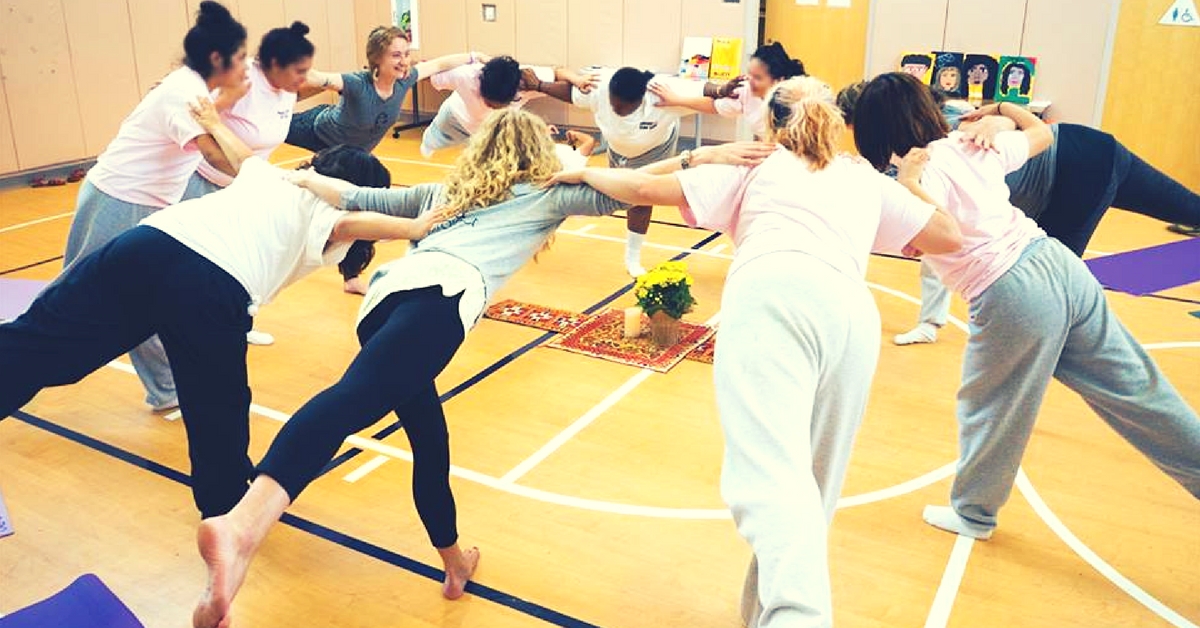Wednesday, June 21, 2017, marks the third installment of International Yoga Day, a day dedicated to raising international awareness of the multiple benefits of practicing yoga.
Recognising its universal appeal and the wide-reaching benefits the practice has to offer, on December 11, 2014, the United Nations proclaimed June 21 as the International Day of Yoga at the suggestion of Indian Prime Minister Narendra Modi.

Yoga has become a powerful tool in combating the stresses and difficulties, both mental and physical, of the world and for that it has got a lot to thank for the spiritual practice that finds its roots in ancient Indian traditions.
From primary schools, to juvenile detention centres, to homeless shelters, to hospital wards, yoga has inched its way into just about every corner of Western society, and it’s having some incredible impacts.
You may also like: How a Former Lawyer Is Setting up India’s First LGBTQ-Friendly Yoga Retreat in Goa
Amongst young people in particular, yoga, and the practice of mindfulness, is yielding some extraordinary results, equipping them with the skills to navigate challenges and improving their lives overall. A report by Psychology Today estimates that beyond 1.7 million children and teenagers are practising yoga.
So, to celebrate ancient India’s gift to the world, here are some examples of how the West is benefitting from yoga:
Yoga and youth in the criminal justice system
It is well evidenced that many young people who end up in the criminal justice system have grown up in or around dangerous environments or exposed to violence.
Furthermore, there is a disproportionate number of young people with varying behaviour and learning difficulties in juvenile detention centres across the world for whom the world can be a difficult and stressful place.
Recent years has seen the popularisation of yoga in prisons and specially adapted programmes incorporated into the rehabilitation of young offenders. Many organisations and NGOs have been established to work with vulnerable youth during their sentences to not only help them cope with being in prison, but to help reform them so that they re-enter the outside world better able to cope.
There has been much evidence to suggest that such programmes not only help these young people manage stress, they also build inner strength, cultivate compassion, help individuals deal with past traumas and feel positive and optimistic about their futures.
The Art of Yoga Project is a US-based initiative that began in 2003 and offers a yoga and creative arts curriculum for girls in the criminal justice system. According to the US Centre for Gender and Justice, as many as 90% of girls in juvenile centres have a history of sexual abuse. The curriculum involves a number of physical and mental activities aimed at helping girls cope and recover from such histories. Quarterly surveys with at least 80% of participating girls consistently report improvements in interpersonal skills, pro-social behavior, and emotional regulation outside of class and more detailed case studies show the girls viewing themselves in a more positive and hopeful way, choosing more positive behaviour and improving relationships with family members and peers.
You may also like: 14 Interesting Facts about Yoga to Know on the First International Day of Yoga
Yoga and primary school children
In today’s digital world, it’s not uncommon for a 3-year-old to be more technologically literate than their parents. As such, many schools, both primary and secondary, are adopting yoga and meditation as a way of encouraging and helping youngsters unplug from the online world and reconnect with themselves and the world around them. Many teachers in the UK especially have called for such classes to become part of the national curriculum to promote good mental health and emotional well-being in their students.
Research into schools already teaching yoga to their pupils suggest that as well as the physical and mental benefits, yoga and meditation has also helped the children in academics, improving their concentration in class and helping them to calm down faster.
The Yoga Factory, based in the UK, specialises in writing courses for school teachers to teach yoga in schools. It is based on the belief that there are strong links between the emotional well-being of children and their personal, social and academic performance. It is estimated that over a million children are now benefiting from the initiatives routines, and that number continues to grow daily.
Adapted yoga for people with physical disabilities
Increasingly, both children and adults with physical disabilities are using yoga, and adapted yoga to strengthen their bodies and in many cases, improve their conditions and mobility.
Individuals with cerebral palsy for example are using yoga to improve balance, coordination, stability and movement while strengthening the mind.
Sonia Sumar runs a yoga centre in Brazil where she teaches ‘Special Yoga’ to children with special needs. The programme she teaches is designed to enhance the natural development of children with special needs, including Down syndrome, cerebral palsy, autism and ADHD.
In a testimony from one of the parents of a child Sonia worked with, it says:
“In a few short sentences it would be impossible for me to relate all that Yoga has done for my daughter. Nevertheless, I would like to share my experience with the many mothers who are searching for a way to improve the lives of their children with Down Syndrome. Thanks to the benefits of yogic breathing exercises and asanas, my 3½-year-old daughter, Eloísa, is a balanced, calm, and happy child, with practically normal development for her age.”
Like this story? Or have something to share?
Write to us: contact@thebetterindia.com
Connect with us on Facebook and Twitter.
NEW: Click here to get positive news on WhatsApp!
If you found our stories insightful, informative, or even just enjoyable, we invite you to consider making a voluntary payment to support the work we do at The Better India. Your contribution helps us continue producing quality content that educates, inspires, and drives positive change.
Choose one of the payment options below for your contribution-
By paying for the stories you value, you directly contribute to sustaining our efforts focused on making a difference in the world. Together, let's ensure that impactful stories continue to be told and shared, enriching lives and communities alike.
Thank you for your support. Here are some frequently asked questions you might find helpful to know why you are contributing?

